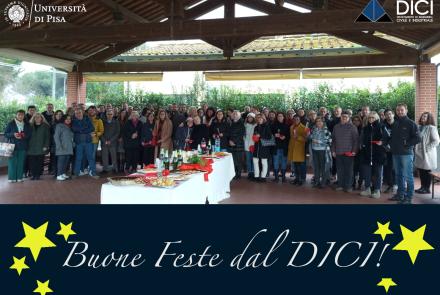3.30 pm

Daniele Marchisio, Polytechnic of Turin
A hybrid modelling and experimental approach for optimizing Li-ion batteries (and the corresponding production processes)
4.30 pm

Lee Johnson, University of Nottingham
Development of the lithium-air battery
Abstract
A hybrid modelling and experimental approach for optimizing Li-ion batteries (and the corresponding production processes)
Batteries play an important role in the ongoing energy transition, as they provide an efficient way to store energy coming from intermittent sources. The current technology is mainly based on Li-ion batteries, with nickel-manganese-cobalt oxides (NMC) as the most popular cathode material. In this seminar the results collected in the EU projects Simdome (https://simdome.eu/) and BIG-MAP (https://www.big-map.eu/) will be summarized. The main idea behind these two projects is to investigate the relationship between (1) process conditions (for producing a specific cathode material) and particle characteristics and then between (2) particle characteristics and the final electrode performance (and therefore of the final cell). The analysis is carried out by producing new experimental data (for NMC811) and by developing computational models, validated in turn against experimental data. The model for simulating the production process (via coprecipitation) is based on computational fluid dynamics and population balances (with OpenFOAM and Ansys Fluent) and accounts for imperfect micromixing, competing chemical equilibria, nucleation, growth, aggregation and breakage. The model for describing the electrode performance is based on three-dimensional time-resolved simulations (with Ansys Fluent and Comsol). This data is used to build a surrogate model with machine learning (i.e. convoluted neural networks). The surrogate model is in turn coupled with a P2D model coded in PyBamm.
Bio - Daniele Marchisio
Daniele Marchisio obtained a PhD in Chemical Engineering in 2002 from Politecnico di Torino and after post-docs at Iowa State University and ETH Zurich, joined Politecnico di Torino, where is now Full Professor at the Department of Applied Science and Technology. He has been visiting professor at University College London, CSIRO Melbourne and Beijing University of Chemical Technology. He has published approximately 200 papers resulting in 9000 citations and in a H-index of 48 (January 2023; source google scholar). His research focuses on the investigation of polydisperse multiphase systems with emphasis on the development of computational models, based on computational fluid dynamics, full-atom and coarse-grained molecular dynamics. His book, published for Cambridge University Press in 2003 with Prof. Rodney Fox, offers an authoritative treatment of the field. Acting as PI he has received funding from the Italian Ministry of Research, the European Commission, several foundations and chemical industries. He is currently member of the Academic Senate of Politecnico, as well as member of the Gender Observatory, chair of the Working Party on Crystallization of the EFCE and associate editor of the Canadian Journal of Chemical Engineering. He is a passionate advocate for diversity, equity and inclusion in scientific research.
Abstract
Development of the lithium-air battery
Lithium-ion batteries have delivered a revolution in portable electronics and have begun to unlock electrification of the automotive industry. However, intrinsic performance limitations mean that many applications will be out of reach for lithium-ion technology. We must explore alternatives if we are to have any hope of meeting the long-term needs for energy storage. The Johnson group is focused on tackling the underpinning chemical and materials challenges within next-generation energy devices and in particular batteries.
One such alternative is the Li-air (O2) battery; its theoretical specific energy exceeds that of Li-ion, but many hurdles hinder its realization. Early cell death, resulting in low capacity and limited rate capability, is one of the most significant problems. Studies of the processes at the positive electrode have shown that this is a result of passivating Li2O2 at the electrode surface, poor utilisation of the electrode structure, and degradation of the cell components. Here, we discuss recent advances made in our labs to understand the chemistry within the lithium-air battery and to combat the problems limiting its performance. For example, we have identified a redox mediator able to promote longer discharge and electrode compositions able to facilitate O2 transport throughout the positive electrode. New degradation processes have been identified, shedding further light on the failure mechanisms within the cells. Finally the impact of operating in air with the inevitable introduction of H2O will be considered and we will showcase a demonstrator gas handling system and cell designed to explore these effects.
Bio - Lee Johnson
Lee Johnson received his first degree from Newcastle University after which he completed a PhD and post-PhD Fellowship in physical chemistry and electrochemistry at the University of Nottingham. He then joined the research group of Prof Sir P.G. Bruce FRS at the University of Oxford, where he studied the elementary processes taking place within the lithium-O2 battery. In 2017, he was awarded a Nottingham Research Fellowship, University of Nottingham, followed by an EPSRC Fellowship in 2018, both to support study of next-generation batteries. In 2019 he was promoted to Associate Professor in the School of Chemistry. His current research interests focus on understanding interfacial reactions, degradation, and charge transfer, in electrochemical energy devices.






